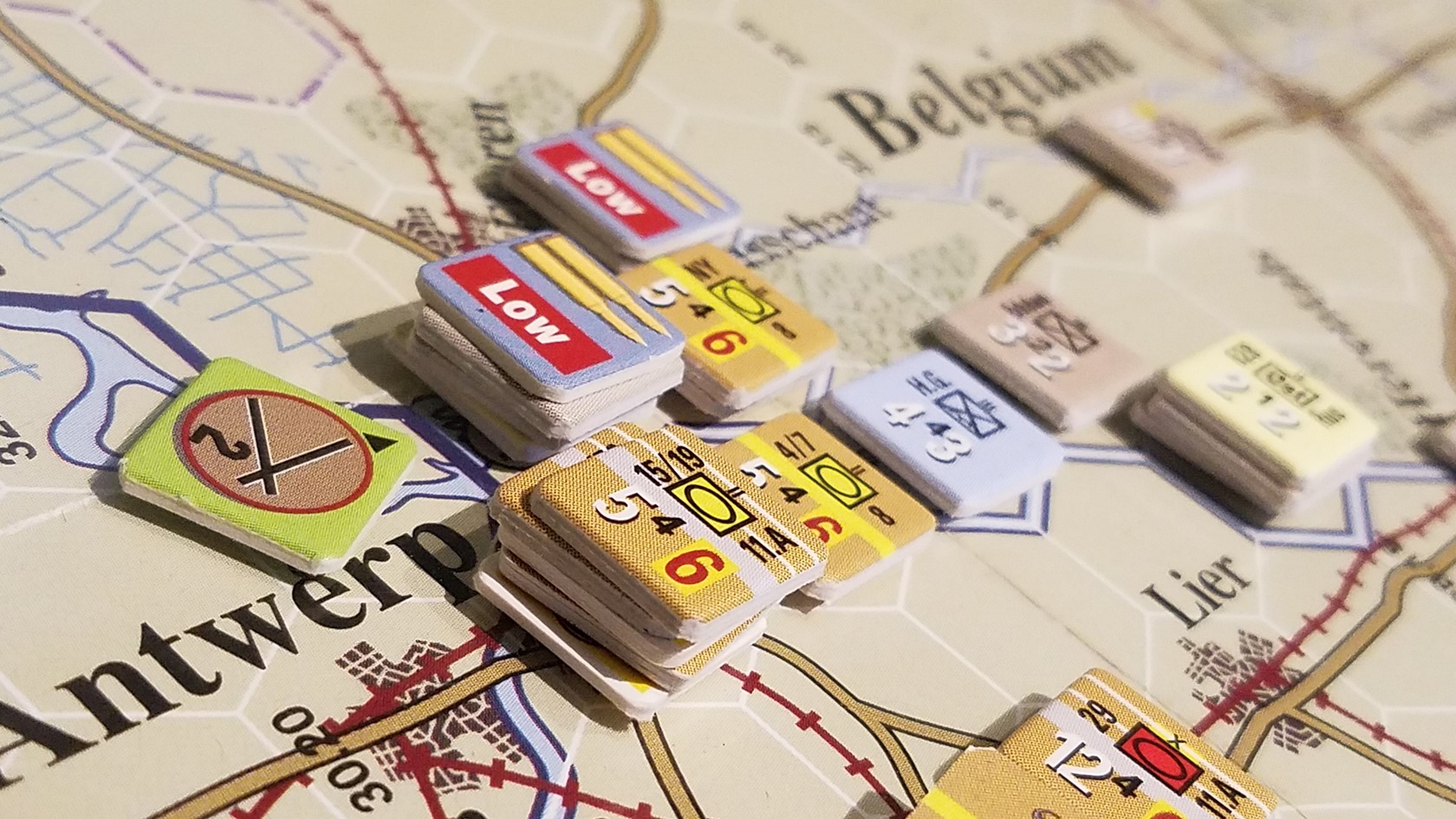Some further background reading for you regarding forces involved in this title:
Under SHAEF’s control were the following ground forces: The 12th Army Group, led by General Omar Bradley, 3rd Army command – George Patton, and Ninth Army (General William Simpson, U.S. Fifteenth Army (General Leonard Germ) was activated in February Command of American corps sometimes shifted within the armies. The Anglo-Canadian 21st Army Group was led by Field-Marshal Sir Bernard Montgomery, whose chief of staff was Major-General Frederick de Guingand, its command was the British Second Army, commanded by General Sir Miles For most of the campaign, Second Army possessed four corps. First Canadian Army was commanded by Lieutenant-General Harry Cretar, and comprised I Canadian Corps and a Tank Corps.
Montgomery’s conflicting orders and dual-purpose manifest meant that the Antwerp-Scheldt area ended up a disaster and it was indeed a strategic disaster. This ended among his most serious blunders of the war; a jolly bad mistake old boy! By underestimated the difficulties of opening up the approaches to Antwerp this limited strategic options for the entire army.
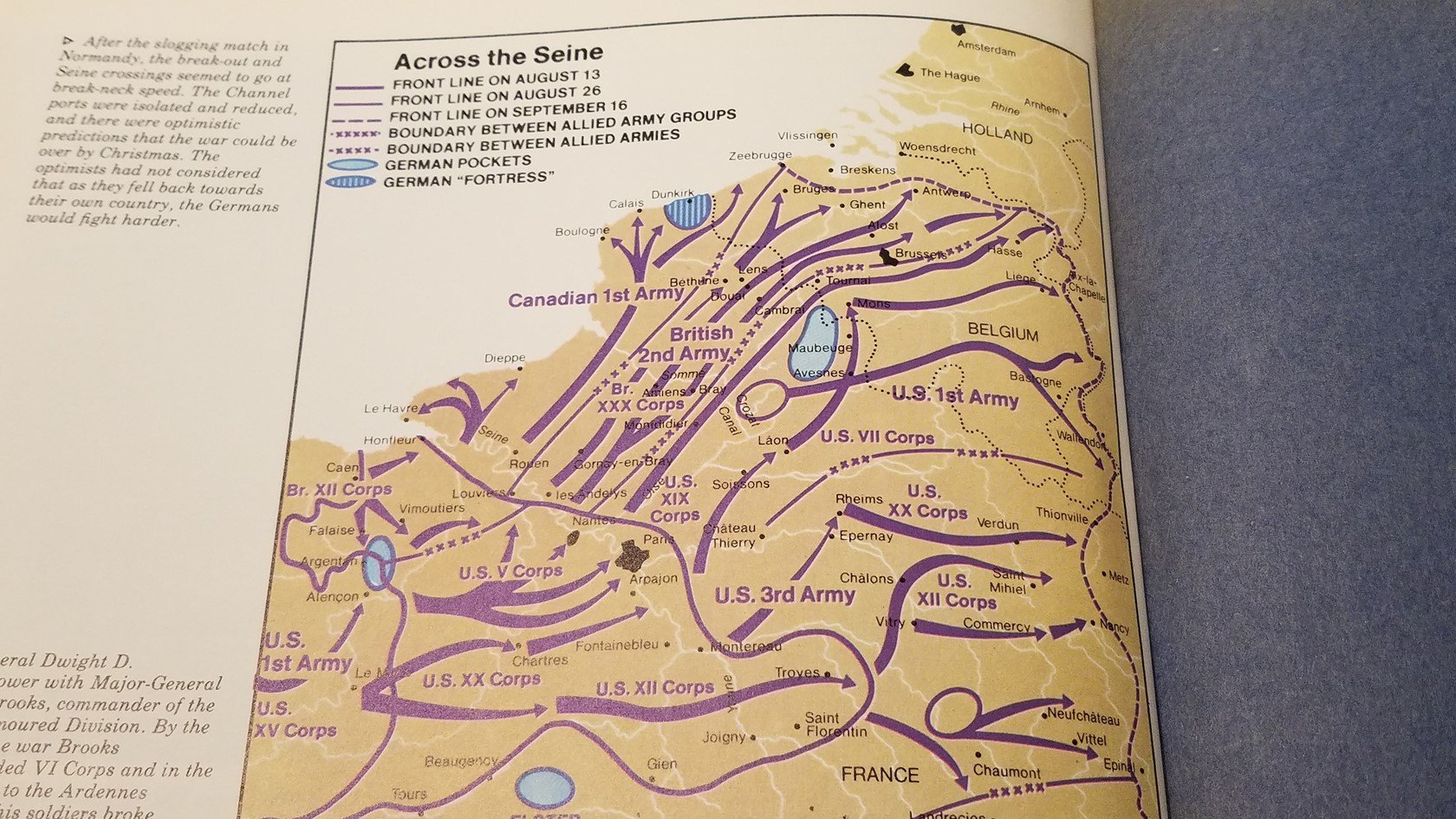
Monty reckoned that the Canadian Army could get the job done [Sheldt Estuary clearing] while the Canadians were dual tasked. It was not merely that the port was unavailable for the shipment of supplies through the two months that followed, a large part of Montgomery s forces had to be employed upon a task that could have been accomplished in days if necessary energy and “grip” been exercised at the beginning of September, the enemy was incapable of resistance then, but quickly rallied and fortified beyond the Albert Kanal.

Further South in early September, American spearheads were operating more than 300 miles from their only source of supply, the beaches and small ports of Brittany Normandy.
The British had passionately opposed the Americans’ August landing in the South of France. Yet Marseilles was to prove an invaluable asset, because the rail links of southern France were much less heavily damaged than those of the north. It was a remarkable feat to move some 89,939 tons of supplies by road armies between 25 August and 6 September, but the achievements of the “Red Ball Express trucking columns have been much exaggerated. They consumed 300,000 gallons of gasoline a day on their own account, and reckless abuse of vehicles disabled them at a frightening pace fifty hundredweight trucks were written off for every week of the Red Ball’s operation. Each division sized slice of the U.S. Army required 640 tons of supply a day more than three times the German allocation! Which translated into of 18,600 tons of supply a day for the joint armies in the first half of October, rising to 20,750 by that month’s end. An armoured division required 25,000 gallons of fuel a day to keep rolling, never mind fighting Even an infantry division consumed 6,500 gallons.
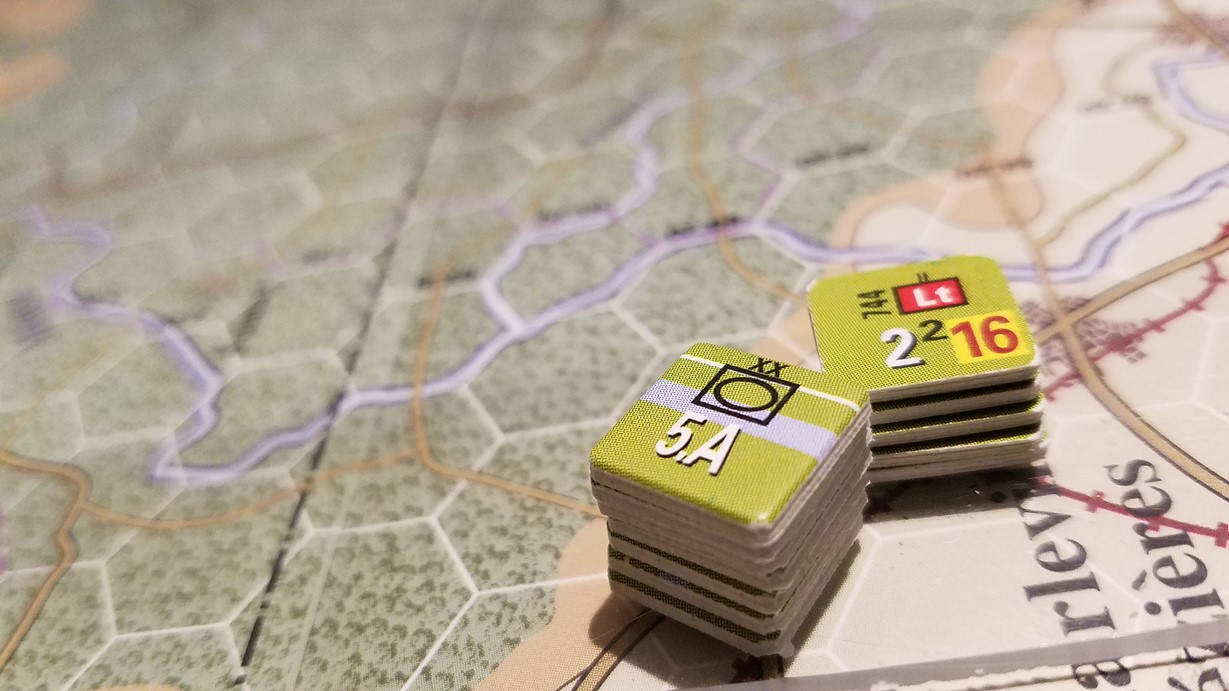
In September, the U.S. 3rd Armored Division possessed only some seventy-live runners out of its established tank strength of 232, a shortfall matched in most In the ten days ending 7 September, the British 7th Armoured division lost twelve tanks to enemy action and thirty-eight to mechanical breakdown; 7th Armoured Division lost six to the enemy and forty-four to breakdown !!
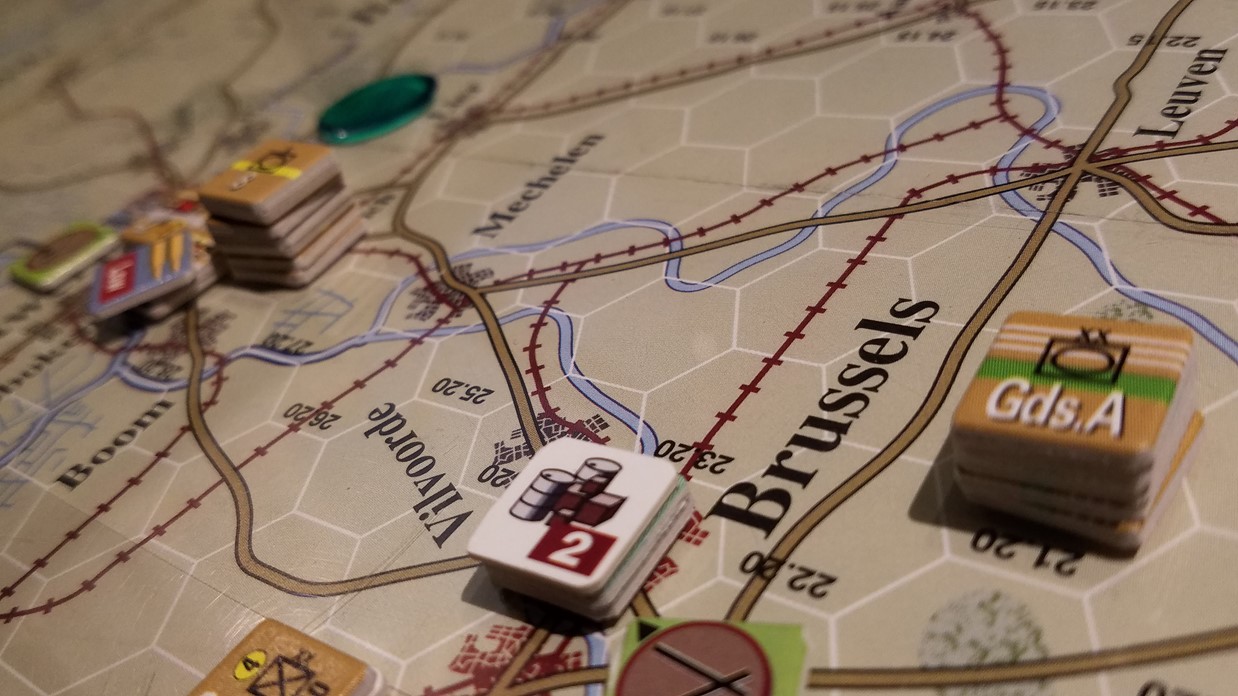
The above excerpt is from Armageddon by Max Hastings. Pardon errors the scanner was not functioning well. Regardless we see that the Allies might be in for a rough time if the Germans get a bit lucky and the Allies are sloppy!…OR BOTH
The opening turn is September 5th, supply is insanely tight. Some units of the Germans will need to fight on Low Ammo, Allied attacks will be sparse and at the expense of movement of other mech units!
1944
Turn 1
September 5th
Air Phase
Select units advance to clear supply routes, press the Germans back and build movement options in the South. In the North the primary focus is Antwerp
Air barrage phase
In the South Air strikes are extremely effect! Near Sedan while 1 Flt. Step is lost the attacks near Sedan earn 2 DG
All British Air attacks fail in the North.
The US score a DG at Namur.
Kortrijk 1 FLT Step lost. Namur just to the west while the allies DG the Germans
Combat phase
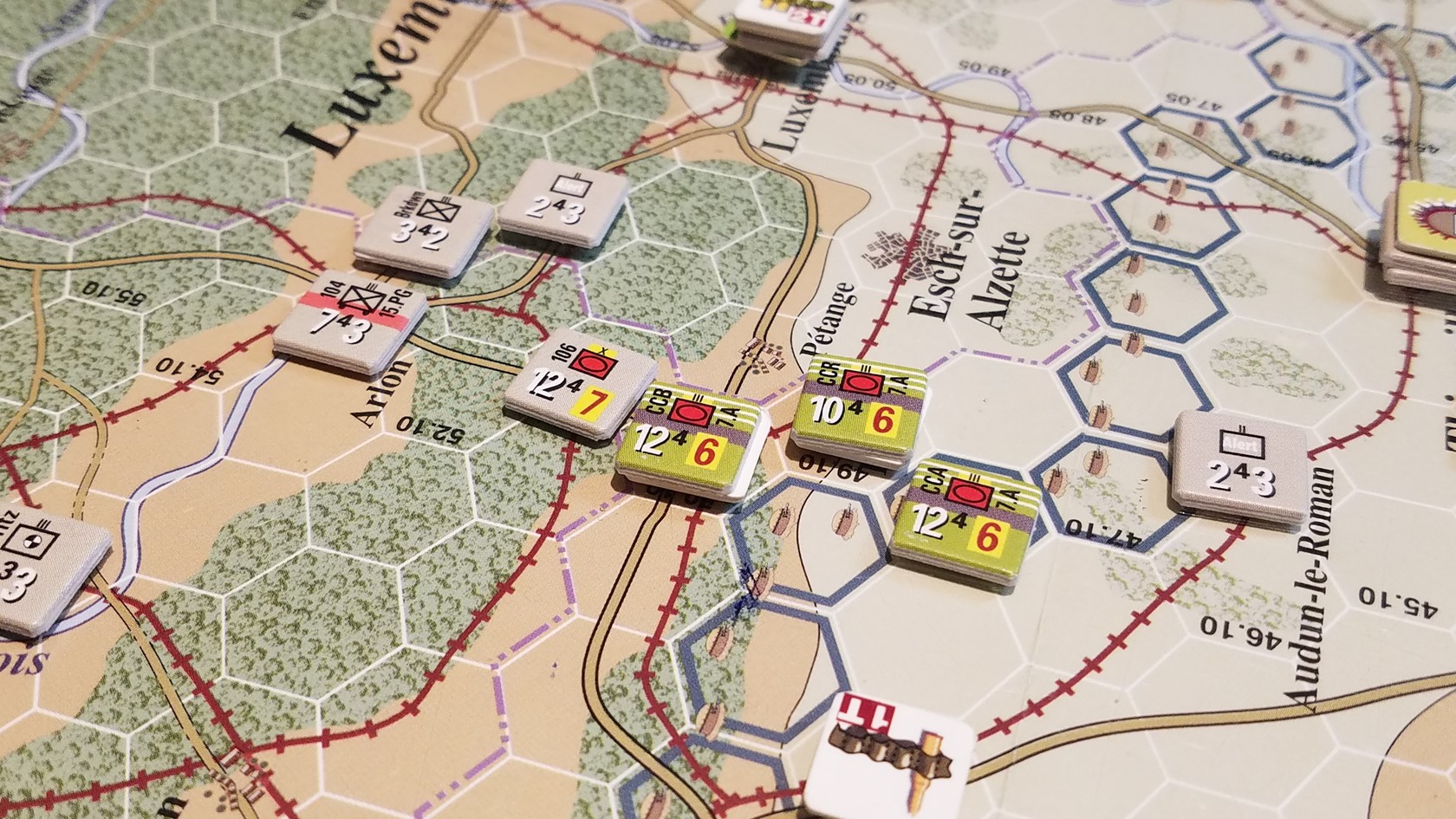
2 ALOI /IDOI, this clears the road to Esch sur Alzette. The US advance carefully.
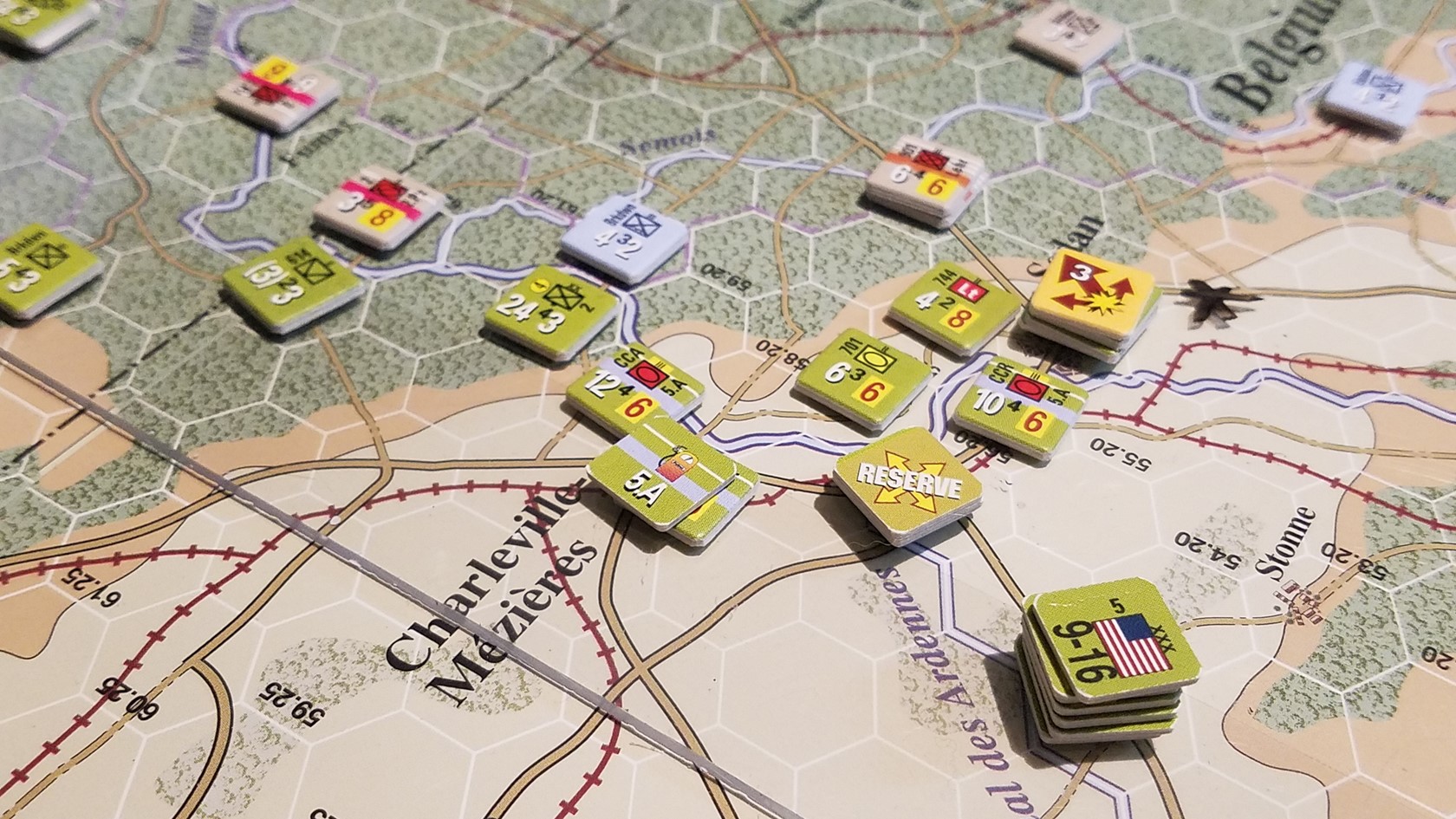
Both attacks here go in at or near max odds DG the 1st attack gets a D2 ae3. 2 Regiments attack relatively well entrenched forces at Chaumont in the South West, only to be rebuffed and take a step loss.
Bradleys sector, North of the Ardennes:
West of Namur. The mechanized forces do Ok and break thru the stunned Germans earning an AE4.
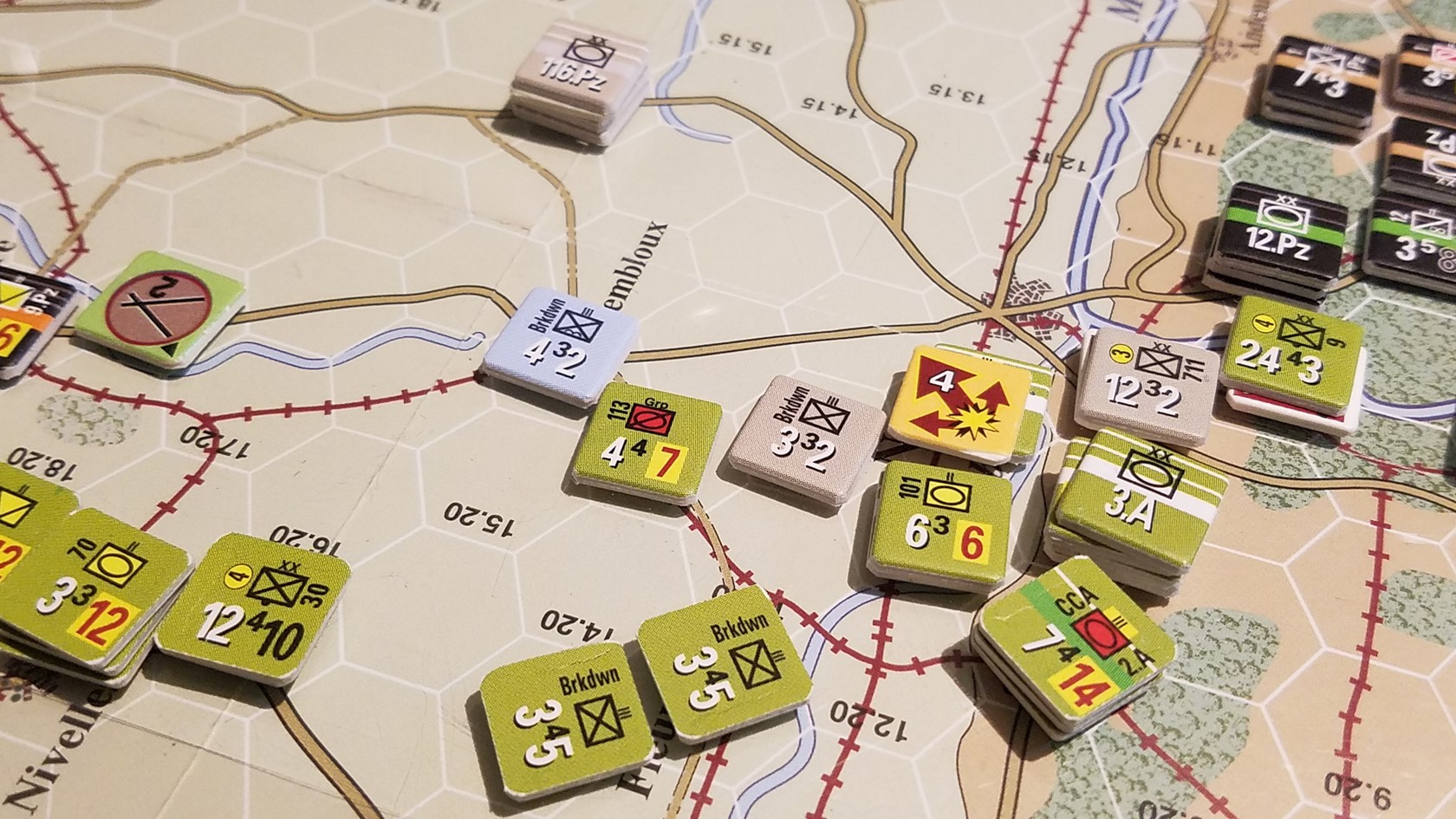
Antwerp AL2 Disaster! Without the air to DG this attack looked sketchy at best.
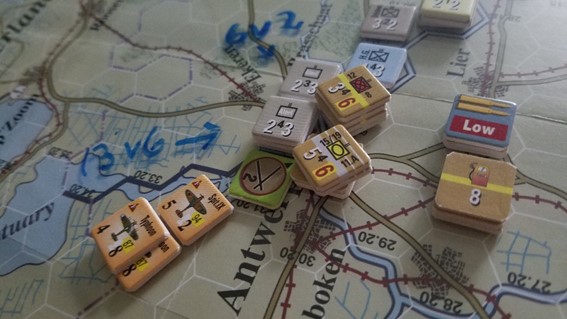
But time is not on our side. We need to strike hard and fast. The Germans have no supplies so they use internals. But the Brits cannot get the job done.
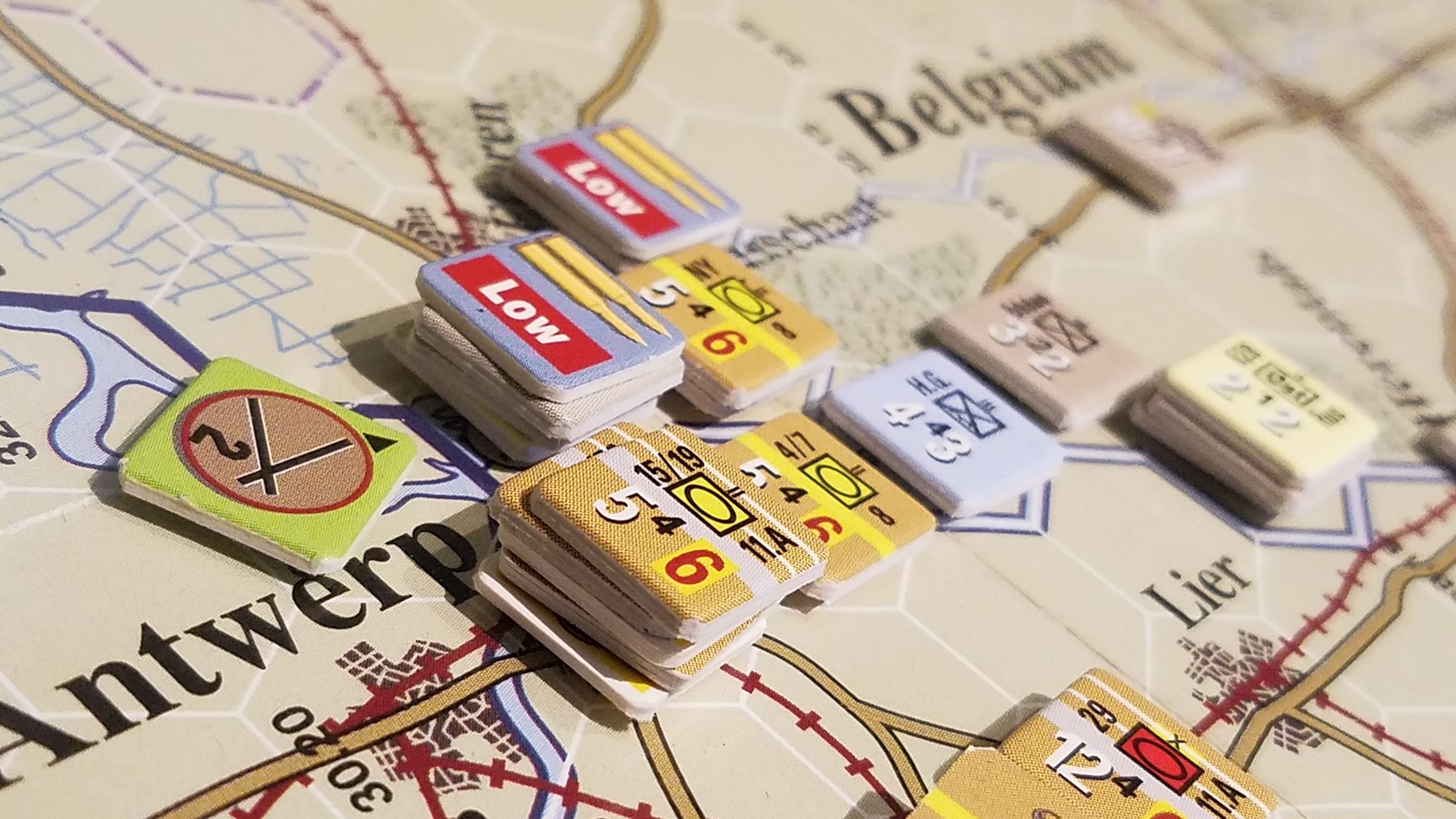
The British attack lead by the 8th Armoured Division is executed more effectively East of Antwerp and the town of Braasschaat falls easily. AS we later realize this is an illegal attack across a Major KAnal… Albert Kanal is a major Canal BigBoard guy….
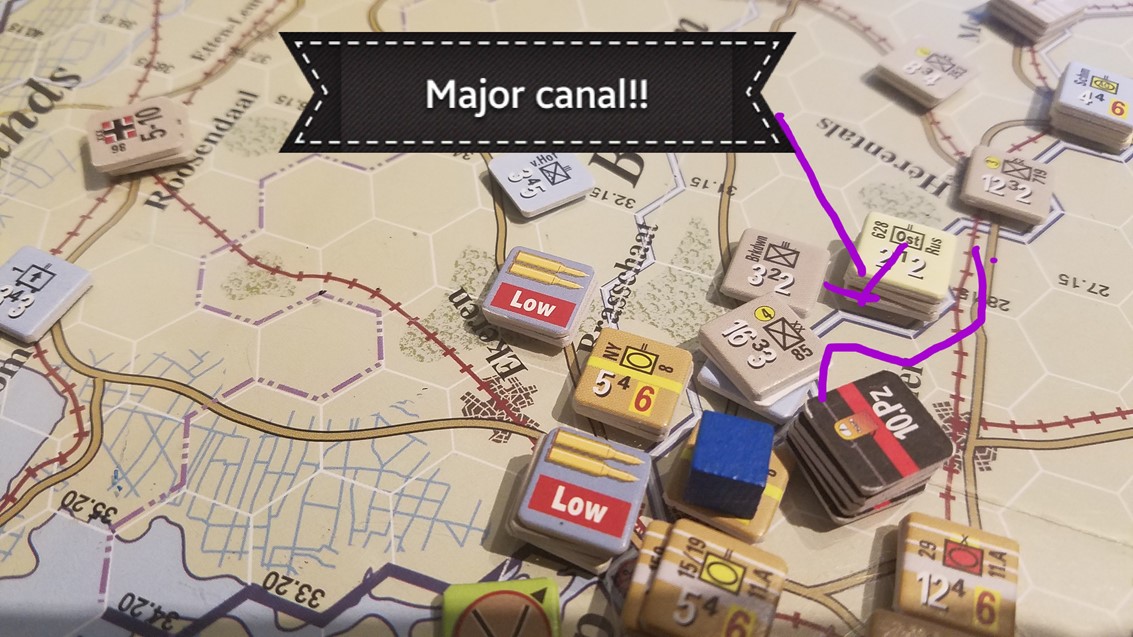
Dienze is also attacked to the far East of Antwerp, to clear access for forces to approach the coastline
Losses this turn ½: 5 steps of Germans and 4 Allied. Next Exploit movement and the German response!
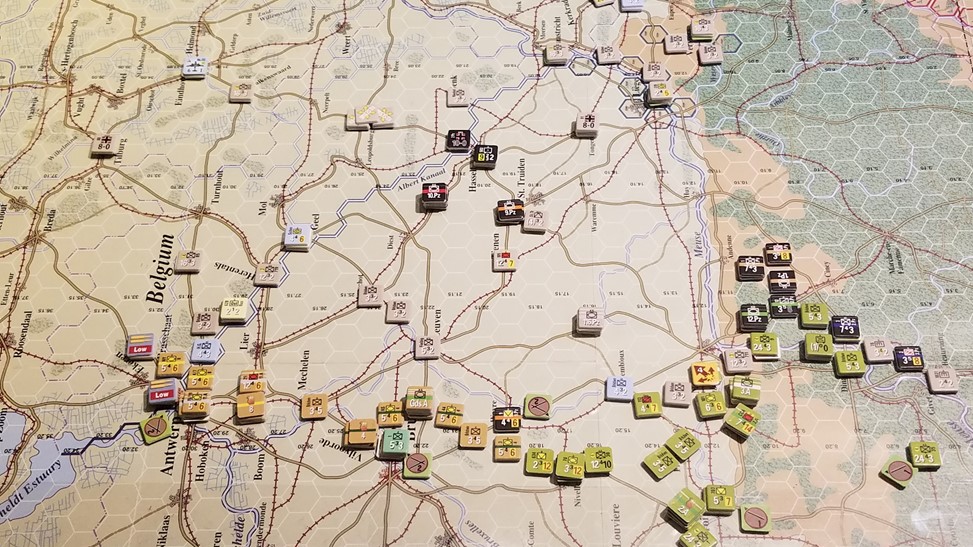
So we replace this with this, a failed attack across the river,
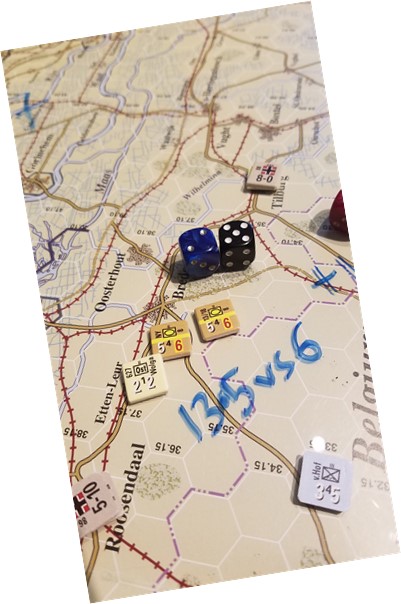
that knocks out two steps of British armour for an OST battalion,,,,:
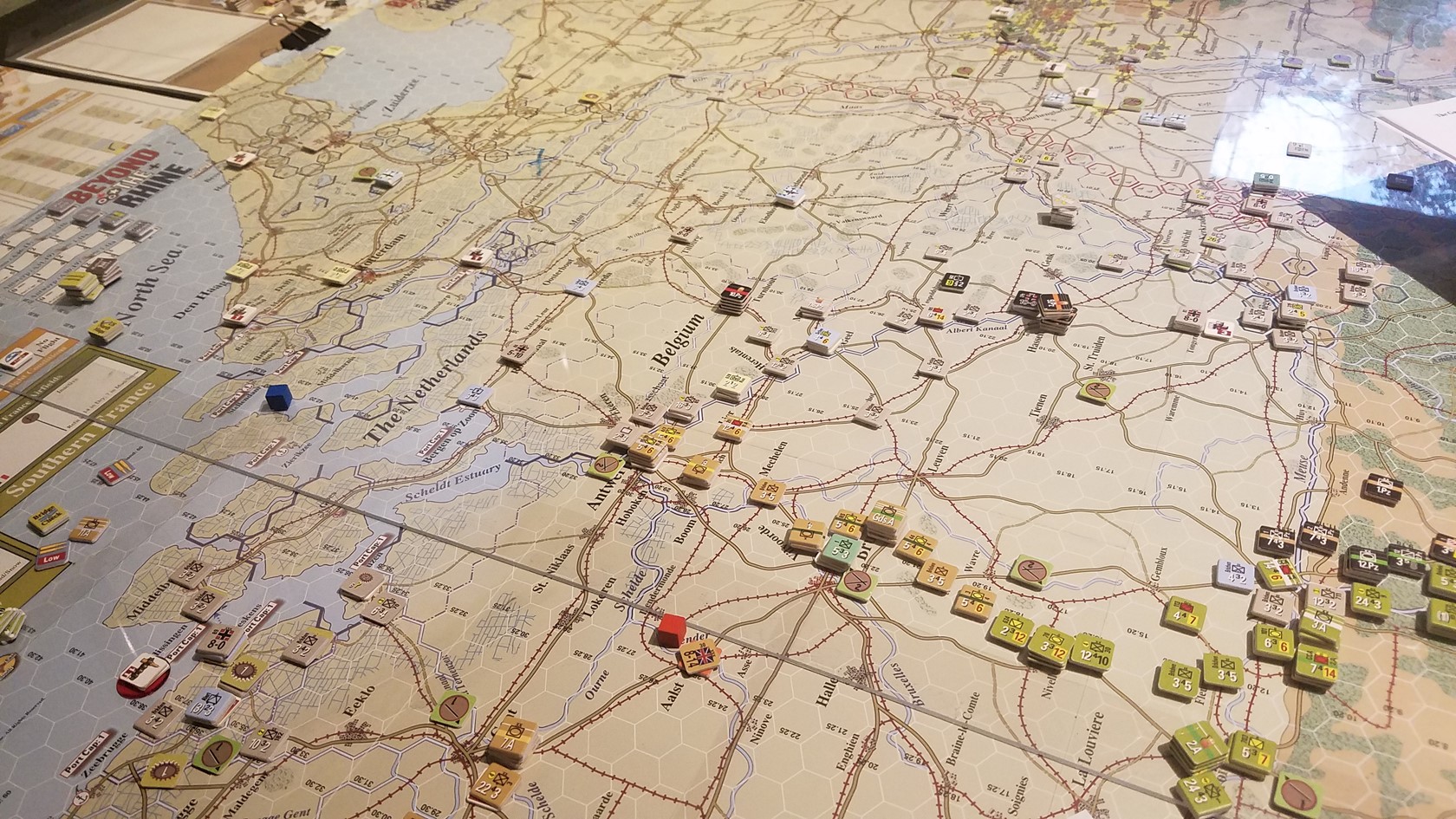
Northern Maps
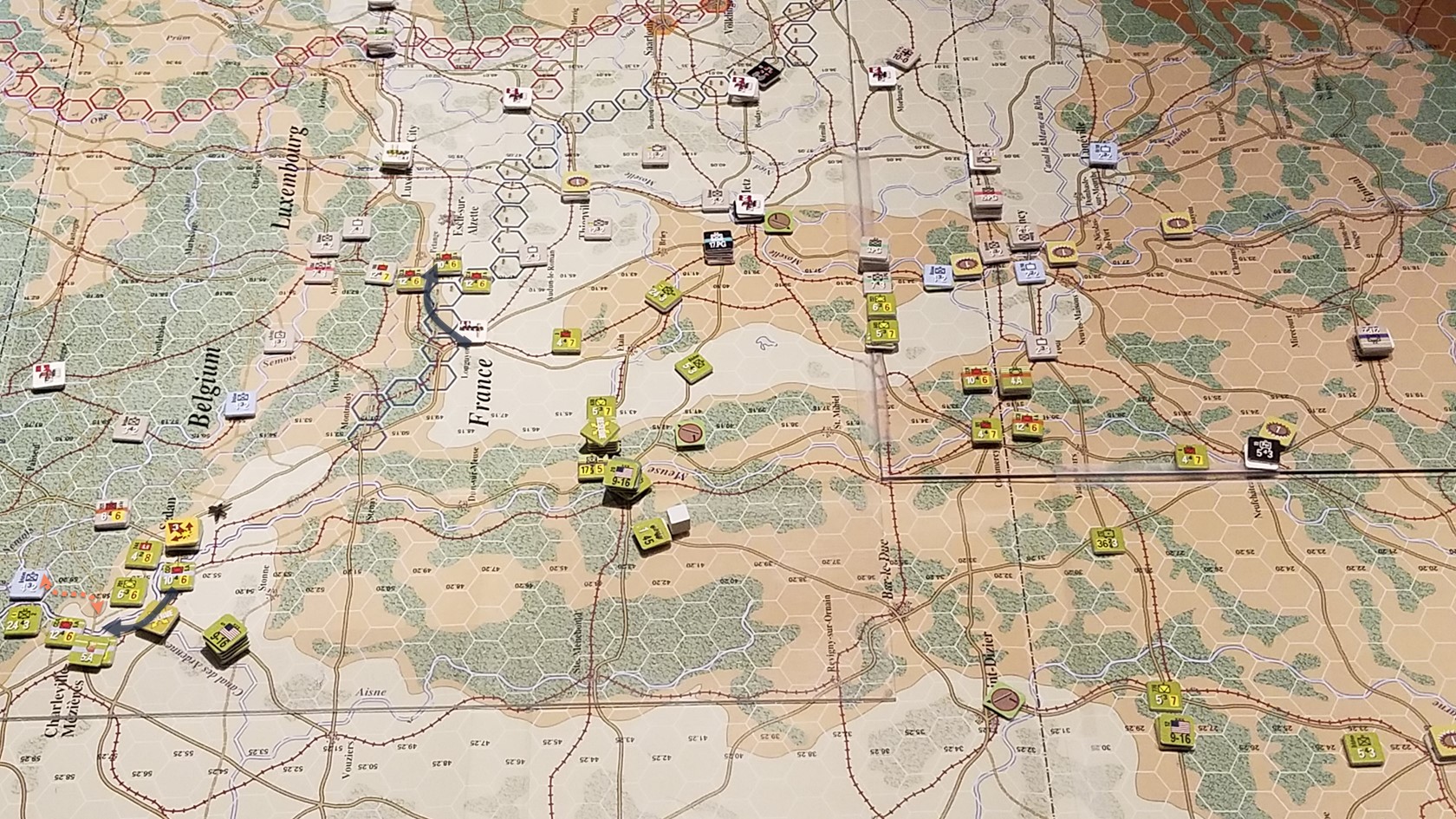
Southern Maps
The German response: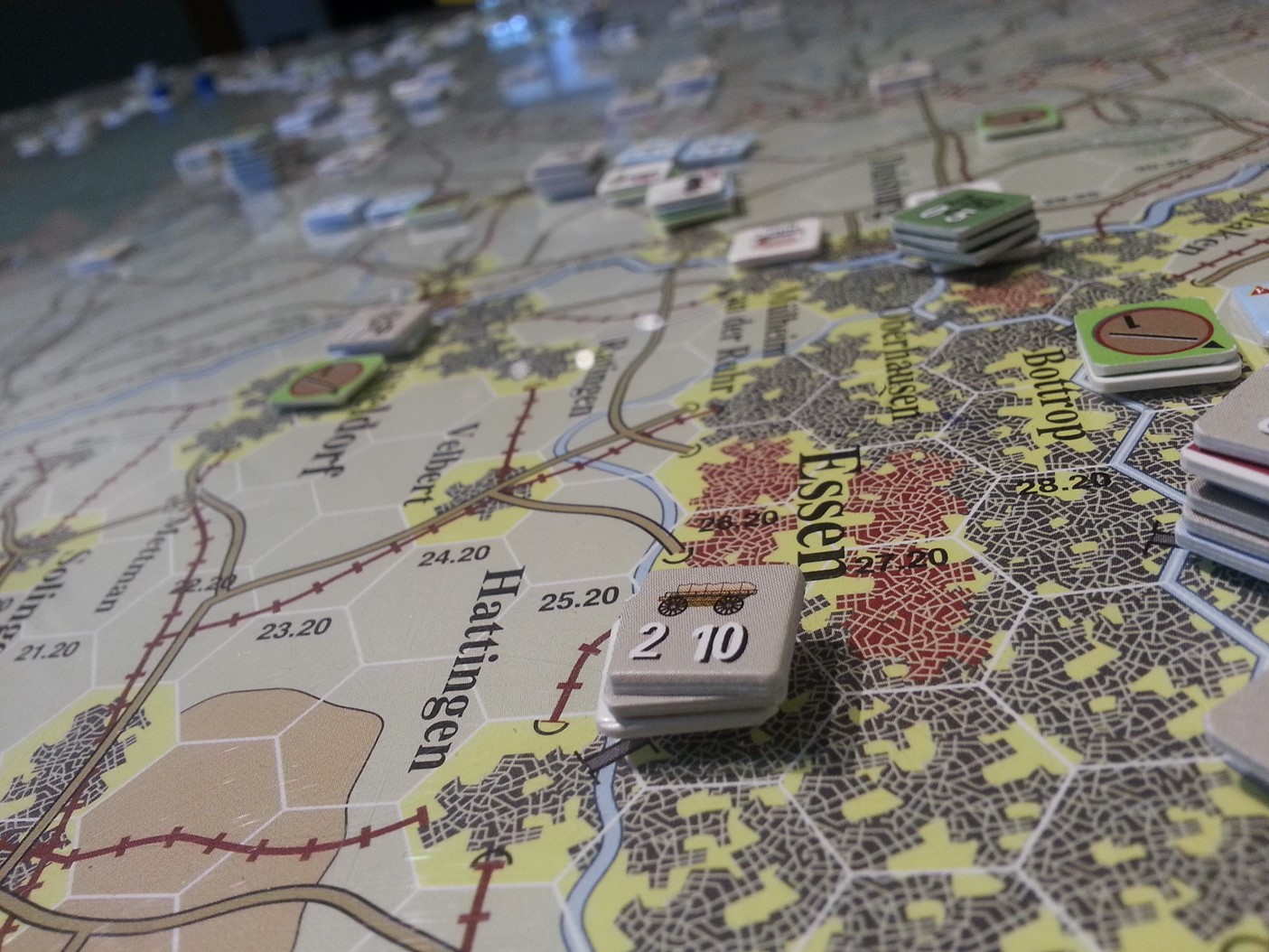
The Germans earn a lot of SP and roll an 11 for their Replacement rolls, which frees Emergency reserves, adds units to the Whacht Am Rhein box for later use and generally gives the Germans a big boost.
They quickly assess that movement to the front line in the North in and around the Albert Canal seems to be the first reasonable line of defence if forces can be brought to the front. Along the Rhine from the German border thru Belgium, Hedgehogs are being built. In the South patch hole in road network gaps and staging forces from the deep South to the North is the primary effort this turn.
